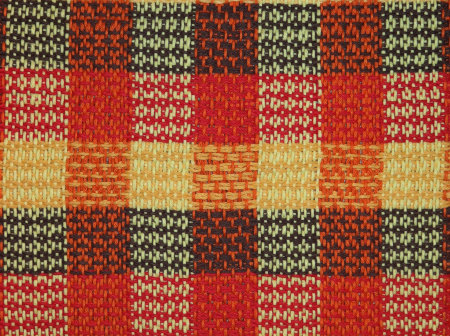As I work on my
table runner, my thoughts drift ahead to what I'm going to do next. I want to weave a
second runner, this one for my daughter, but I want it to be different. One of
the three-color samples in my third
twill gamp dishtowel has stuck in my mind and got me thinking about Crackle. It's a weave
structure I haven't explored yet, although akin to one of my favorites,
Summer and Winter. I thought crackle would make for a good study, and what better way to start
than with my second table runner.
When I chose crackle for a learning project, however, I had no idea how
complicated wrapping my head around it was going to be. This is, in part,
because apparently, there are different types of crackle. I'm running
across terms like "conventional crackle," "modern crackle," "classic crackle,"
and "traditional crackle." What makes it confusing, is that everything out
there is usually presented as just "crackle," even though I'm aware that they
aren't all the same.
This blog post is going to be my attempt to organize all the tidbits of
information I've collected, to see if I can make sense of them.
EDIT: I seem to have an awful lot of notes, so I'm going to break them down
into something of a series, starting with what I've gleaned so far about
crackle's origins and evolution.
History
The history of crackle as a weave structure can be traced back to Sweden,
where it is known as Jämtlandsväv or Jämtlandsdräll (depending on
its regional origin). In the early 20th century, Jämtlandsväv was brought
to the attention of American weavers by Mary Meigs Atwater. She introduced and
explored it as "the Swedish technique" in her
Shuttle Craft Bulletins (all of which are available as free PDFs at
the On-Line Digital Archive of Documents on Weaving and Related Topics.) "Jämtlandsväv" is quite a mouthful for non-speakers of Swedish, so she
eventually called it "crackle weave" because the look of it reminded her of
the crackled pattern of old pottery or batik.
Harriet Tidball followed Mary Atwater as the owner and director of the Shuttle
Craft Guild from 1946 to 1957. In 1949, she introduced a systematic set of
rules for writing crackle drafts, and these became the standard that is still used
today.
Traditional Crackle versus Classic Crackle
Currently, crackle seems to have evolved into two distinct "flavors," Exactly
how and when, I don't know. I do know that it became very popular after
Atwater introduced it, and a lot of experimentation went on. In her
The Weaver's Book
(1961), Harriet Tidball mentions it can be woven like overshot, with pattern
and tabby wefts, or as "classic crackle" which uses three shuttles, each with
a different color yarn. Understanding this much helped me tremendously,
because when I first started looking at drafts, I knew I wasn't always seeing
the same thing. Yet, all were called "crackle."
According to Susan Wilson (Weave Classic Crackle & More), Jämtlandsväv was most commonly woven with two shuttles: one for a pattern
weft, the other for a tabby weft. Mary Atwater started with these, and most of
her patterns are woven in the same way, which was often called "overshot manner."
Lucy M. Brusic (A Crackle Weave Companion) refers to this as the "traditional manner," I suppose because it was the
traditional way with both Swedish and early American weavers.
So what about the three-shuttle crackle? After a little more reading I
discovered that this was called "Italian manner" crackle. It uses three weft colors
with no tabby.
Susan Wilson goes on to describe "Classic crackle" as one of the Italian
manner treadlings. She describes it as using two different color "ground" (background) wefts and a pattern weft. The pattern weft dominates to create
the pattern.
~~~
So, there's my head knowledge about crackle weave at the moment. Stay tuned for
part 2, Crackle Weave: Resources.
Related Post:





































